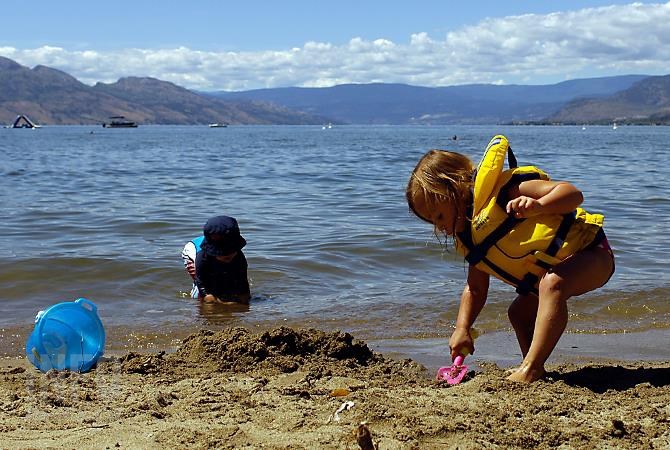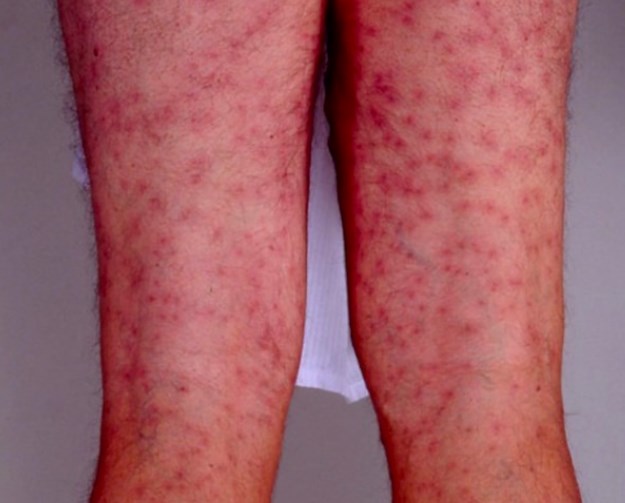
(ADAM PROSKIW / iNFOnews.ca)
August 08, 2020 - 6:30 AM
Most anyone who spends time in Interior lakes during the summer has ended up itching all over at one time or another and may blame it on an influx of geese or ducks.
In fact, the parasite that actually causes that itch comes from the tiny snails that live in many lakes and ponds throughout B.C. Swimmers itch, on rare occasions, has even been reported on coastal beaches.
Officially called schistosomes, the adult parasite often lives in birds like ducks and geese and some mammals. They lay eggs inside their hosts that are passed into the water through feces but these are not the parasites that cause the itch.
Once in the water, the eggs hatch and, as microscopic larvae, search out tiny aquatic snails. They infect the snails, multiply and undergo further development. The infected snail then releases this different type of microscopic larvae into the water where it seeks out shallow areas in order to find its host, which can include humans.
It's those parasites that burrow into humans to cause swimmer's itch, which is largely harmless if not incredibly annoying.
It’s the scratching of that itch that can cause infections that carries a greater risk of needing medical attention.
“The rash and itch can be very irritating, especially for young children, but there should not be any serious danger,” according to HealthLinkBC. “However, if a skin infection occurs from too much scratching, you should see your healthcare provider.”
Young children, according to HealthLinkBC, are more susceptible not just because their skin may be more sensitive, but they often spend more time in shallow water, splashing in and out without fully drying off.
The parasite burrows under the skin but cannot survive in humans so the dead remains can cause a reaction, creating the rash and subsequent itch.
Some people are more sensitive than others.

Swimmer's itch.
Image Credit: Submitted/Mayoclinic.org
The itch can, of course, be avoided by not going into the water in the first place.
That’s not a practical solution, so HealthLinkBC suggests things like diving into deeper water and drying off thoroughly with a towel once out of the water.
“As you start to dry off and the larvae start to burrow into your skin, you may feel a tingling sensation,” the website says. “Small, pin-sized red spots will appear, which grow into larger red rashes within several hours. As these red spots grow, the tingling feeling becomes a strong itch.”
The rash may take 12 hours to appear and, while most irritation will go away in a few days, symptoms can last up to two weeks.
Repeat infections can cause stronger reactions.
Some suggested ways to ease the itch include calamine lotion, antihistamines, shallow lukewarm baths with three tablespoons of baking soda, colloidal oatmeal baths, cold compresses and most of all, avoid scratching.
You might also want to check your dog for the itch if it's been in the water as well.
A Vernon Veterinary Clinic internet posting cautions that the same parasite that gives the itch to humans can seek out dogs for hosts. They’re particularly prevalent in weedy and shallow areas. Dogs should be dried after leaving the water, just like humans.
While that post says to contact a vet if rash and itchiness develop, the web page Wag has a more dire warning.
“It is a more serious condition in dogs than in people because the parasites cannot only live within the dog’s body, but can reproduce and make their own little colony in a canine’s system.
The dog may develop stomach problems such as diarrhea, vomiting and, in extreme cases, liver failure. Deworming may be required.
Local governments do test for “colony forming units,” Shawn Grundy, director of operations for the District of Peachland, told iNFOnews.
The Canadian Recreational Water Quality Guidelines say the upper limit of the colony forming units is 400 per 100 ml of water. His latest test at Swim Bay in Peachland was one unit.
There have been some postings on Facebook about swimmer’s itch in that area.
Grundy suggested reporting cases to the Peachland government office so they can see if more testing is needed in other areas since the focus now is only on weekly tests at Swim Bay.
The same advice goes for other Thompson and Okanagan communities.
Tests are also conducted for e coli counts. Interior Health’s website says any more than 200 e coli per 100 ml of water over a 30 day period is unsatisfactory and it can issue warnings.
The only swimming advisory posted for the entire Interior Health region was issued for Nelson Lakeside Beach on July 29. The cause is listed as “Unacceptable Water Quality Results (microbiological).”
To contact a reporter for this story, email Rob Munro or call 250-808-0143 or email the editor. You can also submit photos, videos or news tips to the newsroom and be entered to win a monthly prize draw.
We welcome your comments and opinions on our stories but play nice. We won't censor or delete comments unless they contain off-topic statements or links, unnecessary vulgarity, false facts, spam or obviously fake profiles. If you have any concerns about what you see in comments, email the editor in the link above.
News from © iNFOnews, 2020